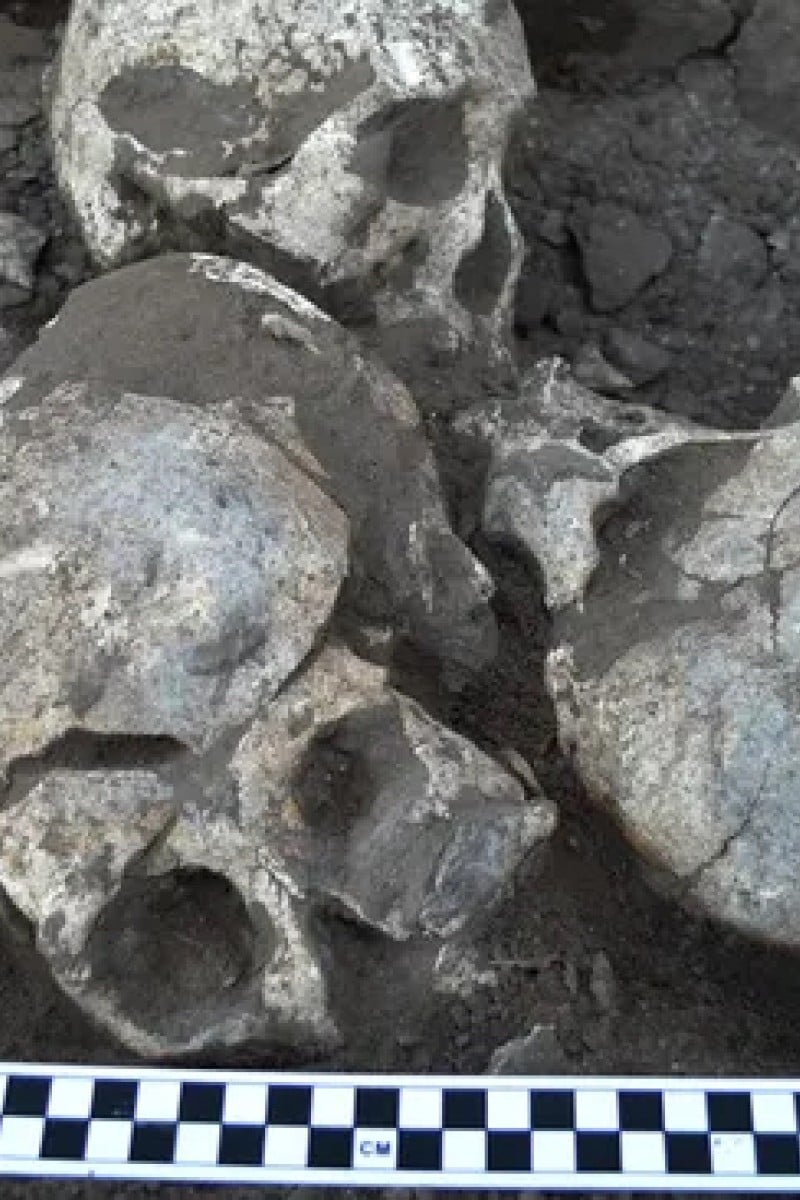A 4,100-year-old mass grave discovered in northeastern China has shed light on the country’s largest known Neolithic beheading massacre.
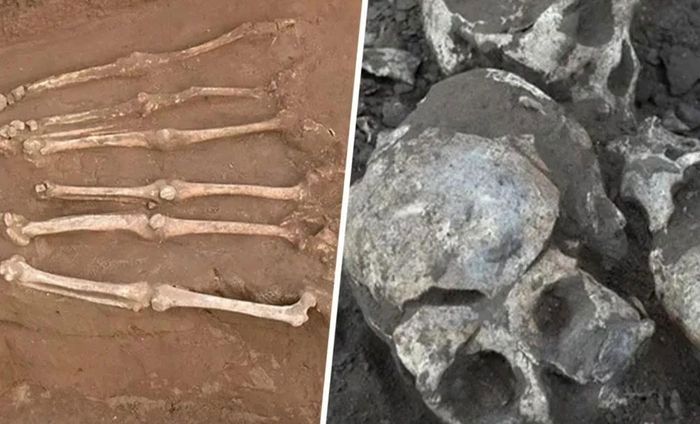 Ancient mass grave reveals the largest beheading massacre in ancient China. (Photo: SCMP/Texas A&M University)
Ancient mass grave reveals the largest beheading massacre in ancient China. (Photo: SCMP/Texas A&M University)
According to SCMP, a study of remains published in September showed that a 4,100-year-old mass grave discovered in Northeast China shed light on the largest known beheading massacre in history. Neolithic period of this country.
Scientists discovered that all the victims in Honghe village, Heilongjiang province were women and children. This shows “the brutality of ancient warfare.”
Qian Wang, study author and professor at Texas A&M University in the US, said: “In history and prehistoric times, beheading was an act of violence, often a form of conflict between tribes. individual or organization.”
“Heads of enemy tribes or groups are sought after to conquer or possess the souls and energies of their enemies,” he said.
Archaeologists first discovered the site in the 1990s and it has been excavated six times since then.
Excavations have uncovered 43 individuals who were victims of multiple beheadings, including 32 individuals who may have been killed in a massacre. This would be the largest known beheading massacre in Neolithic China.
Scientists believe that the victims were beheaded because in addition to losing their heads, the cervical vertebrae also had cut marks consistent with being brutally chopped with a sharp object.
They believe that the beheading massacre was carried out using hand-held weapons with sharpened stones attached to the top.
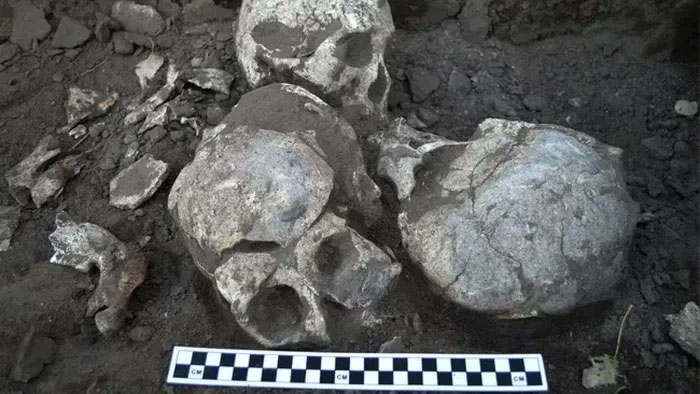 Four skulls, which experts say may have belonged to men, were buried together in a hole. (Photo: Texas A&M University).
Four skulls, which experts say may have belonged to men, were buried together in a hole. (Photo: Texas A&M University).
Although it is impossible to know the exact details of the massacre, scientists have modeled what they believe to be the most likely course of events based on the fact that the massacre targeted women. and children.
The Hong Ha people were probably a fishing, hunting and farming people. They were probably also hostile to some neighboring tribes over resources.
It is likely that the Honghe people attacked other villages and beheaded their residents.
They may have caused deep conflicts between neighboring tribes and one day a group of raiders decided to wait for the men to leave the village and attack the village when there were only women and children. They killed most, if not all, of the victims.
“When the survivors regrouped and the male members of the tribe returned, they moved the bodies to two houses for a simple burial and then left,” Wang said.
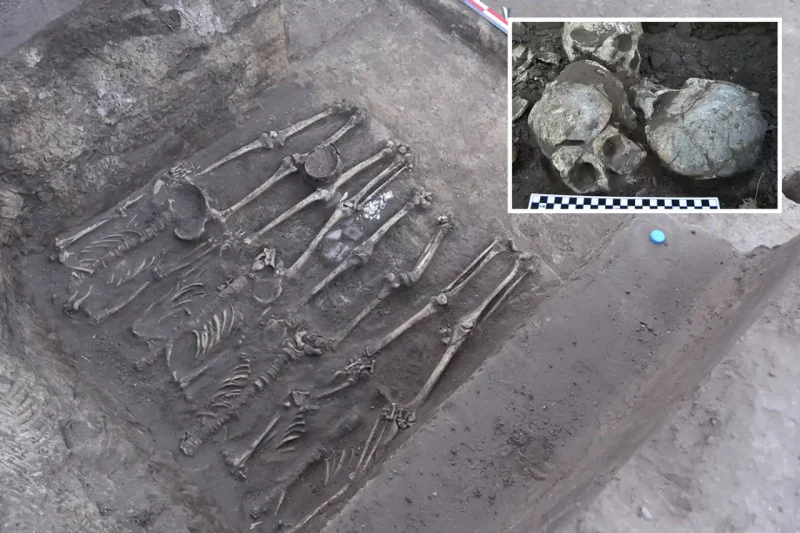
Archaeologists also found four skulls in a separate pit with no accompanying bodies. Wang said they may have been trophies from previous battles that the attackers brought with them to Honghe.
It is known that two similar mass grave sites have been discovered in the Lake Baikal area, Eastern Siberia. The tribes associated with these mass graves also have cultures similar to the hunting and fishing culture of the Hong Ha people.
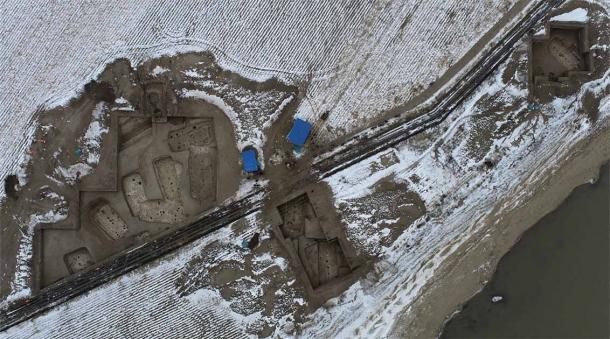
According to a study published by Cambridge University Press, during the Shang Dynasty (1600-1046 BC) , the increased rate of beheading caused the human head to become a valuable object, creating the belief that the A headless soul will be less likely to seek revenge in the afterlife.
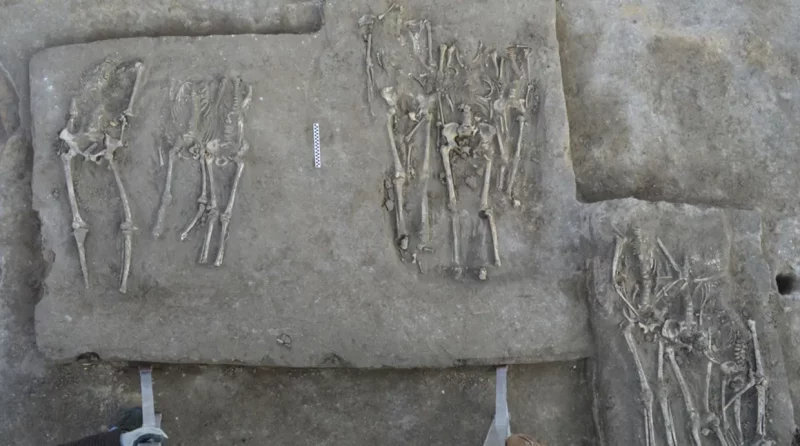
Beheading is one of the traditional punishments that China and some other countries used in the past. This method is often used as a punishment for serious crimes such as murder or treason.
